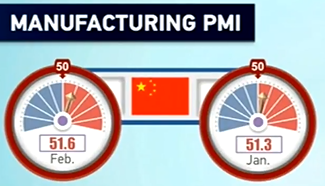By Xinhua writers Cao Kai and Gui Juan
ZHENGZHOU, March 3 (Xinhua) -- New evidence has emerged that prehistoric hominids in northern China might have been hybrids of the indigenous population and Europeans, challenging the popular view of humankind's African origin.
Human cranial fossil remains from 105,000 - 125,000 years ago, found in Xuchang in central China's Henan Province, share characteristics of Chinese hominids, early modern humans and Neanderthals, a species named for the Neandertal region of Germany, according to a report in the "Science" magazine on Thursday.
Research on two skulls, Xuchang 1 (in 26 fragments) and Xuchang 2 (in 16 fragments), discovered in 2007 and 2014 respectively, show a similar occipital bone and inner ear labyrinth structure to Neanderthals, said Li Zhanyang, first author of the report and a researcher with Henan provincial institute of cultural heritage and archaeology.
The Xuchang crania also had primitive features of Homo erectus pekinensis, or Peking Man, including a low neurocranial vault, flat neurocranium and short mastoid with inward slopes.
"The Xuchang humans lived between Peking Man (about 200,000 and 700,000 years ago) and early modern humans in north China (about 40,000 years ago), proving continuity of human evolution in north China," said Li.
Li told Xinhua that Xuchang 1 has features of early modern humans and was very likely a direct ancestor of modern northern Chinese. Xuchang, located to the north of Huaihe River, is geographically in north China.
The African origin of our species is a firm consensus but there are two competing views in paleoanthropology about the origin of extant modern humans, or Homo sapiens, the African view and the multiregional view.
Neanderthals thrived in Europe, northern Africa and western Asia between 30,000 and 130,000 years ago, according to Li.
"It is the first time fossils bearing characteristics of the Neanderthals have been found in east Asia," said Li, who has led a 12-year excavation in Xuchang.
The Xuchang crania will influence research on the origin of modern humans, said Erik Trinkaus, co-author of the report and a professor with the Washington University in St. Louis.
Two years ago, Li formed an international team working on the Xuchang fossils with scientists from the Chinese Academy of Sciences, Peking University, East China Normal University and Washington University in St. Louis.
Researchers used CT scanning and 3D technology to make comparisons with other human fossils found in other parts of the world.
"Xuchang Man is a new species," said Li, however, a DNA analysis of the fossils has yet to be carried out satisfactorily.
"Its features are likely to be the result of crossbreeding between Eastern and Western human species," said co-author of the report Wu Xiujie, a researcher with the Chinese Academy of Sciences institute of vertebrate paleontology and paleoanthropology.
Li believes that the Chinese hominids migrated to warmer European regions during an ice age and crossbred with the early Neanderthals there. During the last interglacial stage (74,000 to 128,000 years ago) when the climate got warmer, the ancestors of Xuchang Man came back to north China. The migration might have happened multiple times due to climate change.












